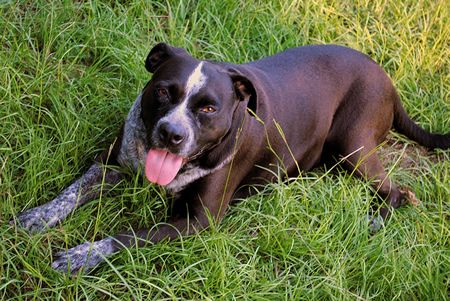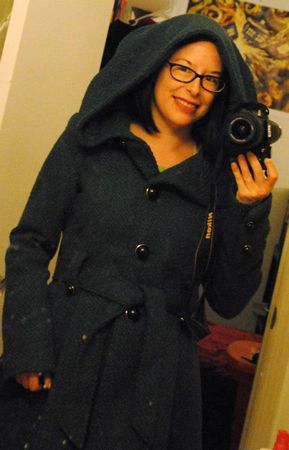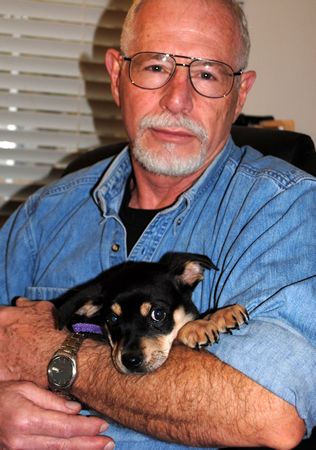I’ve been meaning to write this post for a long time now,
but I’ve been pretty busy this past year. This topic came up sometime in the
spring semester of last year (I think; it’s been a while). I was talking with a
friend of mine – an intelligent, well-educated guy – and he wanted to know how
I could support trap-neuter-release (TNR) programs while at the same time
becoming violently angry towards people who abandoned their animals. After
realizing that I needed to provide him (and as I said, he’s an intelligent and
educated fellow, if not well-versed in feline terminology) with an explanation
of what a feral cat really is and how a *good* TNR program should work, it
occurred to me that I should write a post on this topic. However, I’ve been
busy, and am only just now getting around to writing it.
So… what is a feral
cat? A feral cat is a cat that was born in the wild (or on
the streets), and grew up without any human contact. A feral cat that has
reached adulthood knows how to fend for itself, especially when it comes to
finding food. A feral cat is NOT a stray
or abandoned housecat. While many cat owners have noticed that their feline
companions are skilled hunters, the vast majority of domestic housecats that
have spent their lives in human care would stand little chance of surviving on
their own in the wild. If cats are not socialized around humans as kittens, there
is little chance that they will ever become socialized to the point that they
are adoptable. As such, when feral cats are picked up by animal control in
places that lack a TNR program, the feral cats are typically euthanized as soon
as allowed by law. If feral kittens are acquired at a young enough age
(generally six months or less), they can be tamed; however, this can take
months – and a lot of work.
 This is Charlie.
This is Charlie.
Charlie was a feral kitten. She was approximately four
months old when I caught her. She bit the crap out of me. I’m still amazed that
I was able to hang onto her long enough to get her into my apartment. She was
terrified, and hid under my bed for two months. It was several more months
before I could pet her. She’s now nearly four years old, fat, spoiled, and
content – but it’s very rare that she lets anyone other than me pet her.

This is Sava.
Sava was also a feral kitten that my mom and I acquired in
late 2008. She was probably four or five months old when we got her, and she
was completely terrified of humans. While she will now let us pet her
(especially when we’re putting out food), she has never been, and no doubt
never will be, a super-friendly snuggler.

This is Buddy.
Buddy was a full grown adult male when I trapped him in
2009. He was completely feral, terrified, and furious. I kept him in my
bathroom for about six months, in an attempt to get him accustomed to me. After
six months of getting hissed and snarled at every time I needed to use the bathroom,
I gave up and relocated him out to my mom’s land. He will now (after five
years!) come to within a few feet of me, and as of mid-January 2014 he began allowing my mom to pet him.
Trap-neuter-release programs are designed to return healthy,
vaccinated, neutered feral cats to the environment in which they are accustomed
to living. A good TNR program would never trap, neuter, and release a friendly
housecat, as such an animal would lack the skills to survive. A good TNR
program tests the cats that they have taken for communicable diseases such as
feline leukemia and feline AIDS. Cats with these diseases are euthanized in
order to prevent the spread of these diseases among the feral cat population. Additionally,
feral cats with severe injuries are euthanized. However, a good TNR program
keeps and socializes feral kittens that are young enough to be socialized and
then put up for adoption. A good TNR program not only spays/neuters and tests
for diseases, but also vaccinates the cats against rabies and feline leukemia,
and doses them with a dewormer. In this way, the cats that are released back
into the wild are healthy, vaccinated against future illness, and unable to
reproduce. Keep in mind that these are cats that are accustomed to living in
the wild, without contact with humans. These are wild animals, skilled at
living in the wild, and terrified of humans. If caught by a good TNR program,
they will be released as healthy, vaccinated, and sterile creatures that will
be able to live out the remainder of their lives in the manner to which they
are accustomed. Lastly, prior to release, a good TNR program will notch the cat’s
ear. This ear-notch signifies that the cat has been neutered and vaccinated as
part of a TNR program. Some good TNR programs also operate ‘cat colonies’ –
areas in which the cats can be released in safety, fed through feeding
stations, and monitored at a distance for health issues. (While this is an
ideal situation for many ferals, such colonies are often expensive to manage,
and very few exist in the grand scheme of things.)

Notice I prefaced many of my sentences with the phrase “a
good TNR program.” A lot of people who don’t know anything about cats – like the
guy I mentioned in my opening paragraph – simply assume that TNR is a program
for any homeless cat. Just because a cat
is homeless (and even scared to approach an unknown human) does not mean
that it is feral. Trapping, neutering, and dumping a friendly housecat is
an inhumane act. (Charlie may have once been a feral kitten, but I’ve seen her
lazy fat ass try to catch lizards – and fail miserably. She couldn’t make it in
the wild; she’d be sitting around waiting for the food bowl to appear.) A good
TNR program will examine every animal prior to release in order to determine if
it is a scared, lost housecat or a true feral. Programs that simply perform the
basic trap-neuter-release functions without testing for diseases or vaccinating
the animals are rare, and are usually run by well-meaning individuals who don’t
know any better. However, the best and most humane way for a TNR operation to
work is for the animals to be healthy and vaccinated prior to release.
If you notice that there are feral cats in your neighborhood and they don’t have notched
ears, there are several things that you can do. If you call your local animal
control, find out what they do with captured feral cats. As I mentioned
previously, many animal control facilities simply euthanize feral cats. If your
local animal control euthanizes ferals, see if there is a TNR program in your
area. If there isn’t, you can perform the TNR function yourself: trap the cat
using a humane trap. Take the cat to the vet. If the cat tests negative for
FeLV and FIV, have the cat spayed/neutered, vaccinated against rabies and FeLV,
de-wormed, and have his ear notched. Release the cat in the area where you
found him. You may wish to leave a dish of catfood out for the kitty to make
his/her life easier. If you see feral cats in your neighborhood that have notched
ears, in all likelihood the cats are fine. Keep an eye out in case the cat is
ever injured, and you may wish to leave a dish of catfood out :-)
























